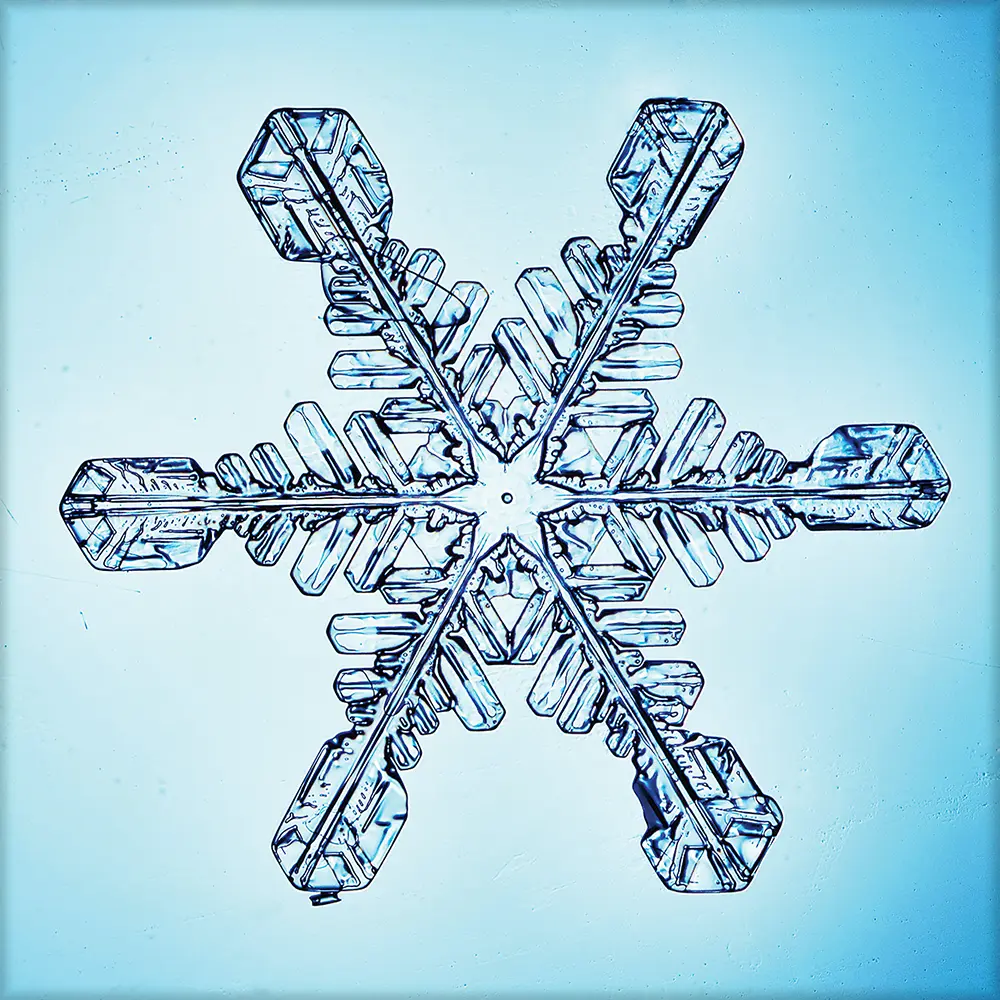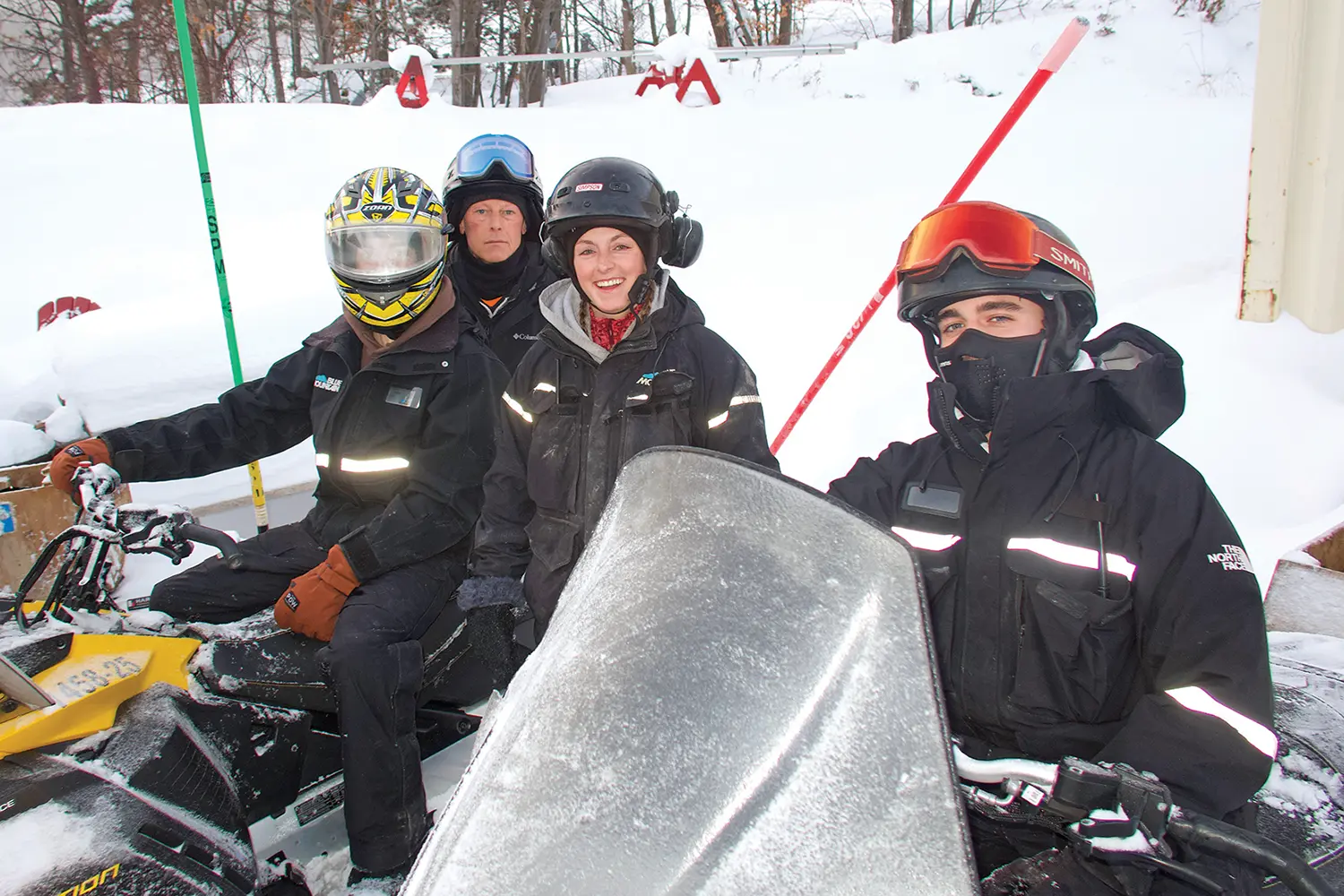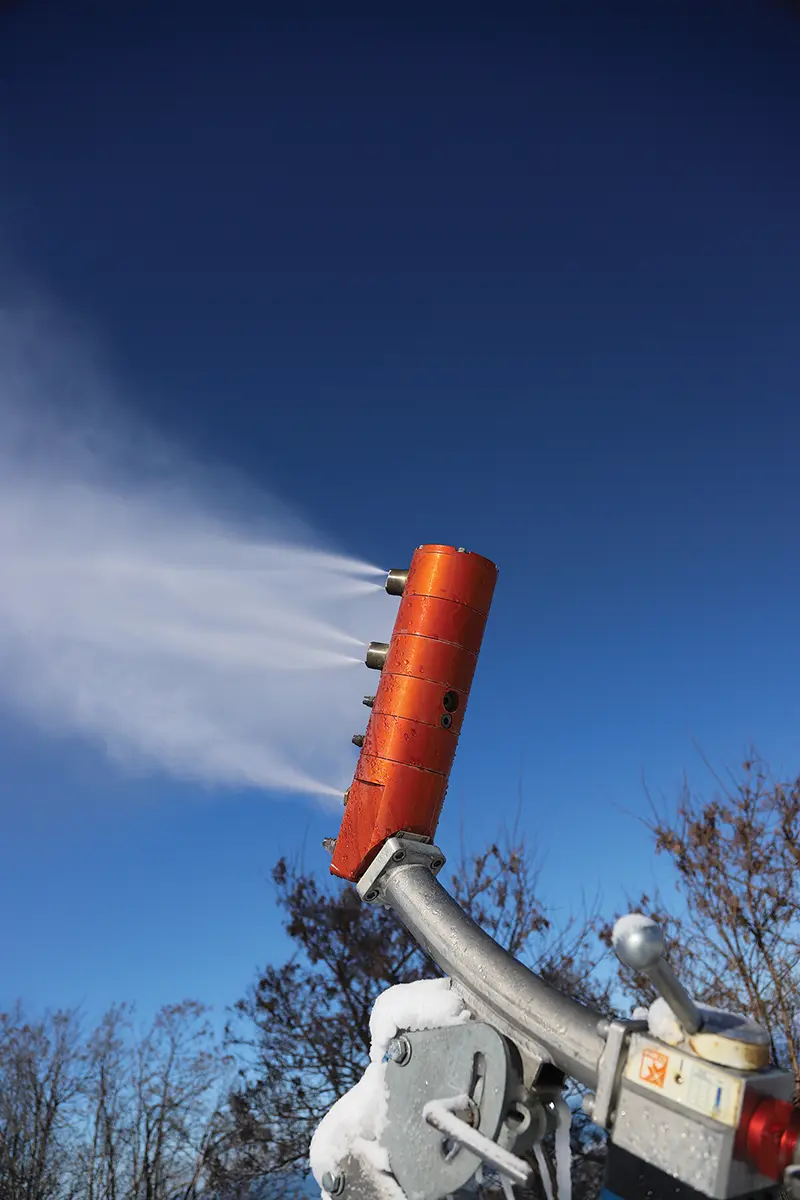Escarpment snow is a magical mix of Nature’s fluff and high-octane engineering.
by Roger Klein
The snow-covered ski slopes around Southern Georgian Bay are a natural attraction and they set this region apart from all others in the province. But Ontario’s climate is highly variable, and the reliable pursuit of alpine sports around here depends on a small group of people who work through the coldest winter nights making snow, like the snowmaking crew at Blue Mountain Resort (BMR).
“We basically have 15 people a night making it all possible for thousands of people every day,” says Mike Towers, BMR’s manager of slope maintenance. Making snow is essential in every sense, and Blue Mountain’s snowmaking crews use science and technology to maximize every window of opportunity.
Weather data drives the decision-making process. “We have four weather stations across the resort, two at the top, two at the bottom of the mountain. We typically have about a two-degree temperature difference between the top and the bottom. And those weather stations will do wet bulb calculations right at the weather station,” explains Towers.

Wet bulb temperature is a calculation that represents the relationship between temperature and relative humidity. Snowmakers watch the numbers and spring into action when the wet bulb temperature hits -2.2 C. The latest technology allows snowmakers to respond within minutes.
“Our goal is to set up 200 guns in 20 minutes. We use flood lines, with automation, which is a single valve that controls up to 22 guns on our hill. So with one click of a mouse we can turn on 22 guns,” says Towers. BMR recently invested millions of dollars to increase the density of its snowmaking infrastructure and double its efficiency.
“Ideal conditions are -5 to -7 and then we can turn on every single gun that we have across the resort,” says Towers.

Snowflake formation in nature
The mesmerizing hexagonal crystalline structure of a snowflake is the result of the molecular structure of water, H2O. An electrostatic force holds the hydrogen and oxygen atoms together (a hydrogen bond). This is the same force that attracts neighbouring water molecules to each other when water is in a gaseous state.
When the surrounding air temperature falls below 0 C, the water molecules become supercooled and begin to adhere to microscopic atmospheric dust particles which form the nuclei of a solid, cohesive, self-organizing structure. A newly formed ice crystal continues to gather nearby water molecules as it floats through the atmosphere—a process called deposition. The crystal lattice slowly expands in the infinitely variable pattern of the hydrogen bond that exemplifies a snowflake. As each snowflake grows in mass, gravitational forces draw it downward through the currents of air toward the landscape. It’s widely accepted that no two snowflakes are exactly the same, but their shapes are categorized in general terms—needles, plates, columns, sectored—and the most elaborate snowflakes are called dendrites.
Machine-made snow
Creating snow out of thin air requires mechanical water pumps and air compressors to create the physical forces to push water through pipes to towers on the ski slopes. Carefully designed nozzles on the individual snow guns accelerate the pressurized air into a jet which atomizes the stream of water into vapour. The airborne droplets freeze into snow crystals and fall as snow below the gun. The ice crystals are similar to those that form in the atmosphere; however, they travel a shorter distance to ground and have less time to aggregate with other water molecules. The result is a smaller, more compact snow crystal.
The large, fluffy flakes that form when cold air blows across the open water of Georgian Bay are famous for making driving treacherous in the region but they do little to contribute to the base on local ski slopes.
“Machine-made snow has a one-to-one compaction ratio, versus natural snow which is more like a 10-to-one compaction ratio. There’s more air in natural snow which gives it the bounce and light, fluffy feeling,” explains Towers. The machine-made snow allows the resort to make snow exactly where it’s needed. It’s also much more durable in high-traffic areas.
“You know, for Ontario, skiing with machine-made snow is actually better, it gives you a nice, solid base,” says Towers. “But we’ll take all the help from Mother Nature that we can get.”














